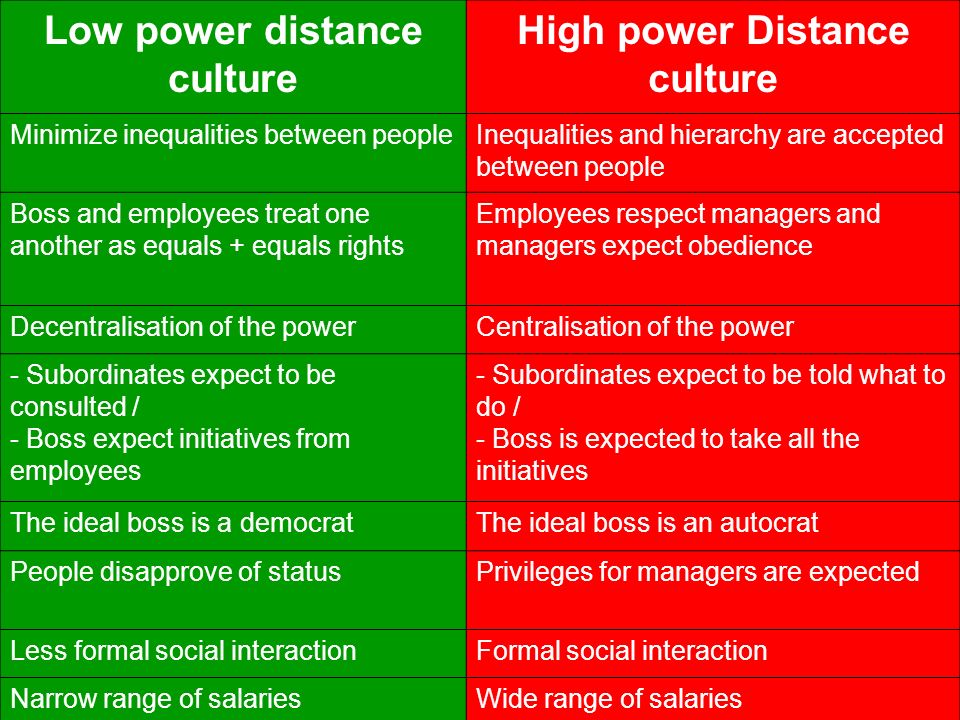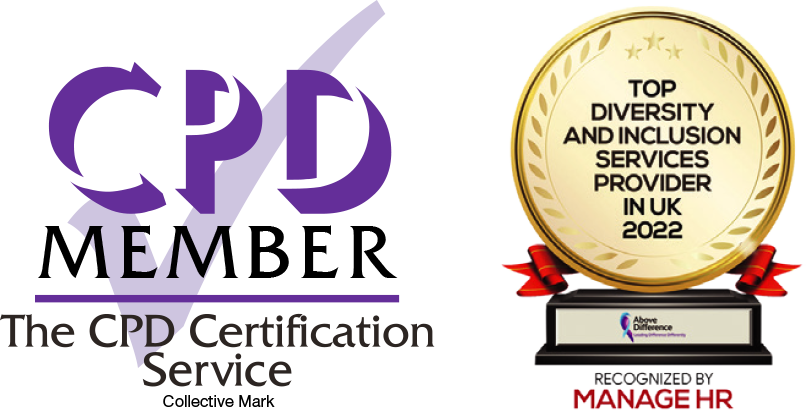So here is the rub. In an ethnically diverse team, set in a low power distance culture where the manager and team members are from diverse cultural backgrounds (Low/high), which definition of respect/value wins out? How does the other individual or individuals resolve the potential loss of part of their cultural identity in the workplace and still feel valued and respected? Can they express their confusion without fear of being patronised, judged, treated as if their own values are retrograde, backward or ‘just not the way we do things round here’. Is simply conforming (by choice or by expectation#) to the dominant cultural perspective real Inclusion?
The issue here is not about which of these two cultural perspectives with regards to respect is preferable or ‘right.’ We will naturally all make that judgement through our own cultural lens and the cultural values of the environment in which we live. While a High Power Distance approach to ‘respect’ and ‘value’ may not sit well with our Eurocentric view of the world, it is the very real and lived experience of many people from African, Asian and Middle Eastern parts of the world and an acceptable way of doing things within the workplace, socially and in families.
This is where Cultural Intelligence (CQ) becomes vital. The Cultural Intelligence Quotient (CQ) is defined as the capability to work effectively across diverse cultural contexts, including ethnic, generational, organisational, etc. I think it’s relevance to inclusion lies in the fact that it provides a common ground for the ‘includers’ and those to be included. Both sides benefit immensely from developing the core capabilities that are key to an enhanced Cultural Intelligence (CQ) in individuals and teams. These shared capabilities make inclusion for all, a comfortable reality.
Individuals with enhanced CQ Drive are motivated to learn and adapt to new and diverse cultural settings and values. This is important because it provides an open and curious platform on which differences in perspectives can are identified and engaged with positively.
Individuals with enhanced CQ Knowledge have a rich, well-organised understanding of culture and how it affects the way people think and behave. They understand that assumptions and stereotypes based on one’s own cultural values and preferences are the death of inclusion and diversity.
Individuals with enhanced CQ Strategy think about multicultural interactions before and after they occur. They recognise the importance of planning, checking, and most importantly possess a refined awareness of the cultural perspectives of self and others during interactions with people different from themselves.
Finally, individuals with enhanced CQ Action translate their CQ Drive, CQ Knowledge, and CQ Strategy into action. They know when and where to adapt their behavior and speech. They know how important this is to make others feel valued, accepted, and in some cases, safe in the workplace.
All of these components can be assessed, developed in individuals and teams and it works. Research tells us that where CQ levels are low, diverse teams will underperform against homogenous teams on every key indicator – performance, productivity, creativity and innovation. Where CQ levels are high, the reverse is true; diverse teams significantly outperform homogenous teams on every indicator.
Cultural Intelligence makes inclusion a shared and jointly owned agenda. It tackles the suspicions, misunderstandings, and friction that inevitably occurs when diverse cultural perspectives come together. It challenges the subtle, covert cultural superiority that sadly, so often underpins misjudged, patronising attempts at inclusion. It says it’s ok to be different but equips us to respond and react to difference in a way that is universally respectful. CQ helps us do difference better.
The challenge is not about how diverse organisations look but how diverse they feel for everyone. Those feelings will always be shaped and analysed through the lens of our diverse cultural values, lived experiences, and preferences. Real inclusion comes when we openly acknowledge those differences, recognise the distances that everyone has to travel to an agreed and shared set of values around being and doing in the workplace. When teams are Culturally Intelligent, they make this journey together. There are no ‘includers’ and ‘included’ just a diverse and beautiful spectrum of individuals seeking, learning, experiencing, and shaping together.
These are the individuals and leaders that produce innovative, inclusive and creative solutions that make the world a much better place for all.




